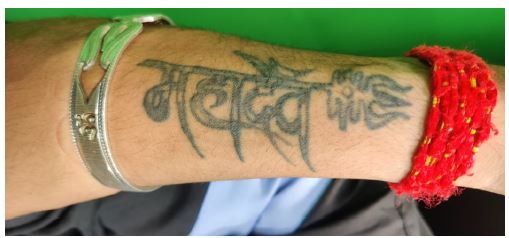Popular Culture and Identity Formation A Study on Tattoo Consumption Practices among Urban Youth
DOI:
https://doi.org/10.5281/zenodo.12485064Keywords:
tattoo, body, popular culture, identity, urban indiaAbstract
Tattoo has been transitioning to become a socially acceptable form of self expression from a stigmatized notion, and the youth are drawing images from the culturally available symbols to put together bodily appearances against conventional cultural standards. The notion associated with tattoos in the mainstream understanding is being challenged by the youth's bodily behaviour, and the widespread consumption of tattoo is breaking the stereotypes linked with the ink. The visibility of the tattoo in the popular culture represents an acceptance of tattoo as a legitimate art form by an increase in its consumption by the youth. The tattooed people started legitimizing their own tattoos by tattoo narratives that ascribe semantic meaning to their images. The identity formation of the youth through bodily comportment is enabling them to express his/her ideology through the social skin. Widespread tattoo consumption reveals how informal social control and judgments about socio-economic status play out in the realm of popular culture and personal embodiment. The current study focuses on how the youth is marking their identity with Tattoo.
Downloads
References
Ahmed, S., & Stacey, J. (n.d.). Thinking through the skin.
Blair, L. (2007). Tattoos teenagers an art educator’s response. Art Education, 60(5), 39–44. https://doi.org/10.1080/00043125.2007.11651123.
Hebdige, D. (1991). Subculture: The meaning of style. Routledge.
Kjeldgaard, D., & Bengtsson, A. (2005). Consuming the fashion tattoo. ACR North American Advances. https://www.semanticscholar.org/paper/Consuming-the-Fashion-Tattoo-Kjeldgaard-Bengtsson/b044ae37cf0ced99e41250435b581e08e65e6734.
Kosut, M. (2006a). An ironic fad: The commodification and consumption of tattoos. The Journal of Popular Culture, 39(6), 1035–1048. https://doi.org/10.1111/j.1540-5931.2006.00333.x.
Kosut, M. (2006b). Mad artists and tattooed perverts: Deviant discourse and the social construction of cultural categories. Deviant Behavior, 27(1), 73–95. https://doi.org/10.1080/016396290950677.
Kosut, M. (2006c). Mad artists and tattooed perverts: Deviant discourse and the social construction of cultural categories. Deviant Behavior, 27(1), 73–95. https://doi.org/10.1080/016396290950677.
Kosut, M. (2015). Tattoos and body modification. in International Encyclopedia of the Social & Behavioral Sciences, pp. 32–38. Elsevier. https://doi.org/10.1016/B978-0-08-097086-8.64027-8.
Larsen, G., Patterson, M., & Markham, L. (2014). A deviant art: Tattoo-Related stigma in an era of commodification. Psychology & Marketing, 31(8), 670–681. https://doi.org/10.1002/mar.20727.
Lippert, P. (1980). TATTOOING: The image becomes the self. ETC: A Review of General Semantics, 37(2), 158–171.
Mensah, E., Inyabri, I., & Mensah, E. (2018). The discourse of tattoo consumption among female youth in Nigeria. Communicatio, 44(3), 56–73. https://doi.org/10.1080/02500167.2018.1556222.
Rees, M. (2016). From outsider to established—Explaining the current popularity and acceptability of tattooing. Historical Social Research, 41(3), 157–174.
Riley, S. C. E., & Cahill, S. (2005). Managing meaning and belonging: Young women’s negotiation of authenticity in body art. Journal of Youth Studies, 8(3), 261–279. https://doi.org/10.1080/13676260500261843.
Rubin, A. (1988). Marks of civilization: Artistic transformations of the human body. Museum of Cultural History, University of California, Los Angeles.
Sanders, C. R. (2008). Conducting and living with a tattoo ethnography.
Schildkrout, E. (2004). Inscribing the body. Annual Review of Anthropology, 33(1), 319–344. https://doi.org/10.1146/annurev.anthro.33.070203.143947.
Springgay, S. (2003). Cloth as intercorporeality: Touch, fantasy, and performance and the construction of body knowledge. International Journal of Education and the Arts, 4(5), 34–50.

Downloads
Published
How to Cite
Issue
Section
ARK
License
Copyright (c) 2024 Shiva Thrishul, Tejasvi Jamjala

This work is licensed under a Creative Commons Attribution 4.0 International License.
Research Articles in 'Social Science Journal for Advanced Research' are Open Access articles published under the Creative Commons CC BY License Creative Commons Attribution 4.0 International License http://creativecommons.org/licenses/by/4.0/. This license allows you to share – copy and redistribute the material in any medium or format. Adapt – remix, transform, and build upon the material for any purpose, even commercially.










